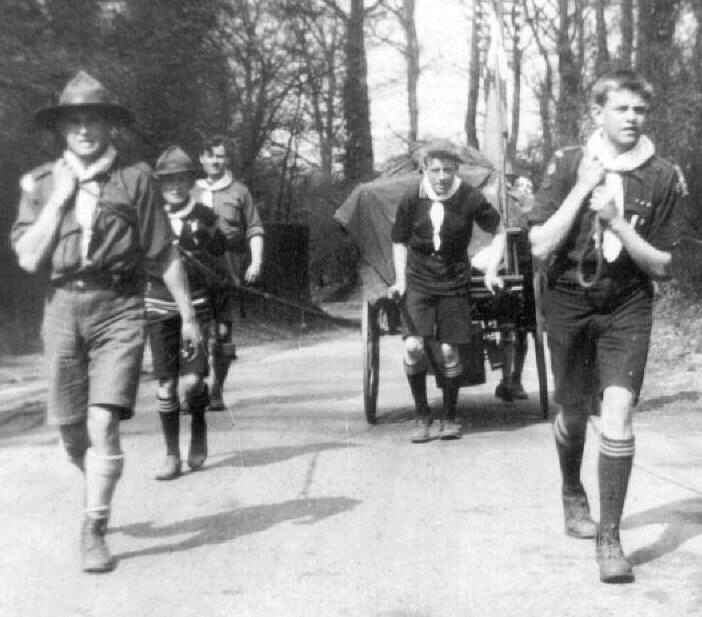
Figure 1.--Here we see 4th Harrow Scouts in 1921 trekking to camp at Aylesbury. Note the light and dark colored uniforms.


Figure 1.--Here we see 4th Harrow Scouts in 1921 trekking to camp at Aylesbury. Note the light and dark colored uniforms. |
The future of the Scouting movement was hotly contested in Britain during the 1910s. The influence of the British Boy Scouts and the World Order of Scouting helped to move Baden Powell's rather militaristis nationalist Scout Assosciation to a less military and more internationalist approach. This issue in Britain had largely been settled in the 1910s. Much of the impetus for this international outreach came from the Brithish Scout movement. The campaign or Smokey Bear hat continued to be the single most destinctive elelment of the English Scout uniform and it was adopted by Scouts all over the world.
The Smokey Bear hat continued to be the single most destinctive element of the English Scout uniform and it was adopted by Scouts all over the world. A reader reminds us that, "Smokey the Bear didn't come along until the 1940s, so it is anachronistic to refer to his hat when discussing Scouts in the 1920s. Besides, "Smokey Bear hat" is US-centric, and "lemon squeezer hat" would be more generally understood by an international audience." The Scout scarfe was another important element of the uniform and was normally a solid color. I am not sure what color or colors were worn. The military style shirt had apauletes and pockets with button flaps. The hat and shirt are a brown khaki color. The knee-length shorts appear to be a dark blue. The kneesocks are a khaki brown to match the shirt.
The future of the Scouting movement was hotly contested in Britain during the 1910s. The influence of the British Boy Scouts and the World Order of Scouting helped to move Baden Powell's rather militaristis nationalist Scout Assosciation to a less military and more internationalist approach. This issue in Britain had largely been settled during the 1910s. Much of the impetus for this international outreach came from the Brithish Scout movement. This became a passion on Powell's part as after World War I as fervently he preached the gospel of internmational Scouting. As the nationalist passions unleashed by the War began to dissapate in the 1920s, this proved exceeding popular in most countries where Scouting became the most popular youth group. While Scout navigated the nationalist divide, it was less successful in addressing racism. Notable exceptions to the success of Scouting were Italy and the Soviet Union which banned Scouting in favor of Government-sponsorded and controlled groups. Another exception was Germany where youth organizations affiliated with political partirs anf religious groups grew in importance during the 1920s, one of these was the Hitler Youth which by the late 1920s had aschieved some promianace and preached a virulently natioanlist and racist credo.
Navigate the Historic Boys' Uniform Chronology Pages:
[Return to the Main chronologies page]
[The 1900s]
[The 1910s]
[The 1920s]
[The 1930s]
[The 1940s]
[The 1950s]
[The 1960s]
[The 1970s]
[The 1980s]
[The 1990s]
[The 2000s]
Navigate the Historic Boys' Uniform Web Site:
[Activities]
[Biographies]
[Chronologies]
[Countries]
[Essays]
[Garments]
[Organizations]
[Religion]
[Other]
[Introduction]
[Bibliographies]
[Contributions]
[FAQs]
[Questions]
[Unknown images]
[Boys' Uniform Home]
Navigate the Historic Boys' Uniform Web organizatiion pages:
[Return to the Main English Scout uniform chronology page]
[Return to the National Scout page]
[Boys' Brigade]
[Camp Fire]
[Hitler Youth]
[National]
[Pioneers]
[Royal Rangers]
[Scout]
